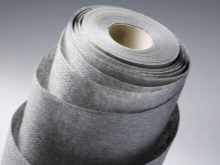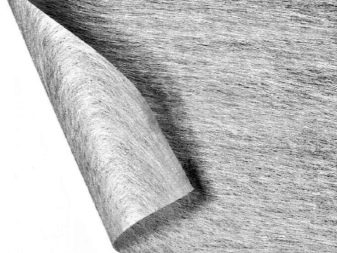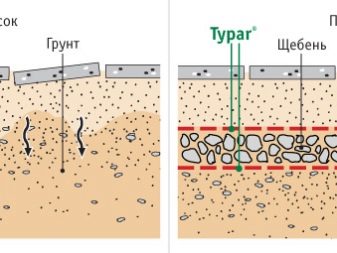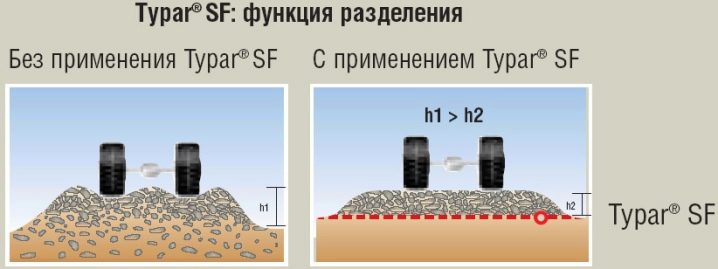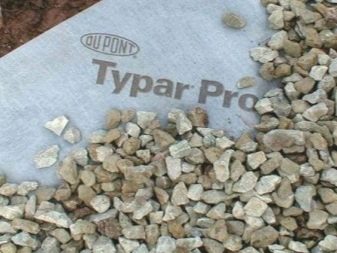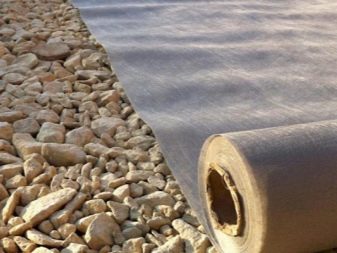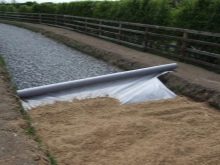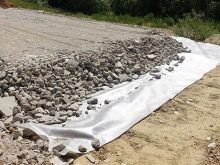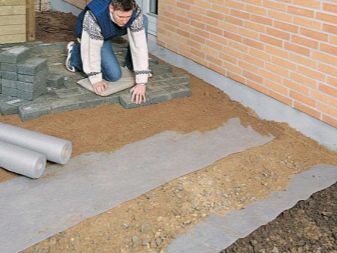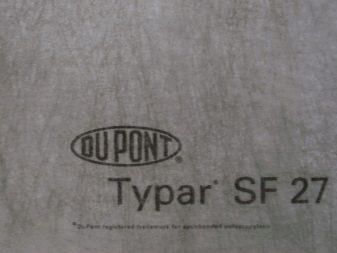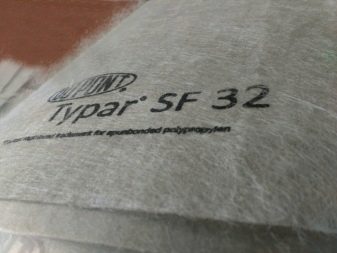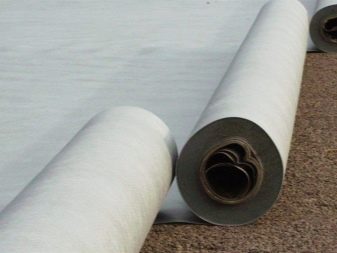Features and types of Typar geotextiles
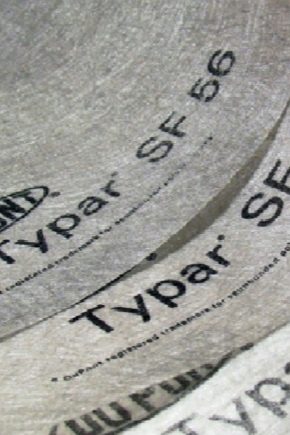
Every year, Geotextile Typar from the world-renowned manufacturer of innovative materials - the company DuPont - is becoming increasingly popular among consumers.
Special features
Geotextiles from DuPont is a non-woven material, completely consisting of thin polypropylene fibers with a diameter of 40-50 microns.
In the manufacturing process, endless and homogeneous polypropylene yarns are subjected to various influences using proprietary proprietary technology. Subsequently, tightly laid fibers are firmly fastened together by mechanical and thermal effects. To increase the strength in the production process, special stabilizers are added to the material.
The composition and technology of manufacturing geotextiles provide excellent physical and mechanical properties, including:
- initial modulus of elasticity;
- elongation to rupture of more than 50%;
- material homogeneity, due to which the strength of the web is significantly enhanced;
- ability to withstand heavy loads;
- good filtration properties.
Thanks to all these qualities, the Typar geotextile fabric can perform several functions at once.
Material Functions
The main functions of the canvas include filtering and drainage. They are provided by a special material structure, which:
- prevents soil particles from entering the drainage layer or drainage structure, preventing silting;
- ensures the uniformity of filtering characteristics on any segment of the drainage system;
- prevents erosion, preventing the leaching of granular materials.
Also, geotextiles perform a strengthening function, in which:
- increases compactibility of soil, at the same time increasing its bearing capacity and improving resistance to bursting;
- improves the frost resistance of the base;
- reduces the risk of "swelling" of the soil.
All this contributes to a significant strengthening of the erected buildings and structures, as well as the extension of their service life.
In addition, using the canvas in various construction works, you can reduce the cost of construction materials and simplify the production technology.
Benefits
Multifunctional non-woven material Typar has a large number of positive qualities, advantageously distinguishing it from a wide range of similar products.
- Ease and compactness the cloths allowing to reduce transportation costs of delivery, and also considerably simplifying storage and labor costs when using.
- Hydrophobicity Due to the fact that the material does not absorb moisture, it does not swell, and its weight does not increase. In addition, even with constant contact with moisture, the material does not exfoliate.
- Easy handling. If necessary, the material is easy to cut with the usual tool that each owner has. It is not necessary to unwind and unfold the material for cutting - you can cut a roll using a hand or chain saw.
- Ability to withstand heavy loads and resistance to mechanical damage.
- Ability to withstand temperature in the range from -60 ° C to + 100 ° C.
- Sour resistancet, alkalis and other chemicals.
In addition, Typar geotextiles are not afraid of insects, it is not exposed to mold and rot, and roots (even after a long time) do not germinate through it.
All these properties directly affect the durability and quality of the material - it can be stored in the ground for several decades without loss of functionality.
Scope of application
The features and technical characteristics of geotextiles from DuPont allow it to be used in various fields.
- When laying roads for various purposes. Due to the fact that the propylene fibers firmly hold crushed stone and gravel, laid under the asphalt, the roadway does not sag over time, they are not formed ruts.
- At arrangement of railway tracks where the cloth also carries out the strengthening and keeping functions.
- In the drainage works during construction in areas with groundwater and when laying various pipelines.
- In hydraulic engineering, for example, when creating artificial reservoirs.
- To protect the shores and bottom of watercourses from erosion in port facilities.
- When landscaping various areas and green areas on the roofs of buildings.
Simplicity of laying and reasonable price allow to use the material both in small areas and in large areas.
Types of Typar geotextiles and their characteristics
The DuPont product range offers several types of Typar geotextiles, the technical characteristics of which differ from each other, which makes it possible to choose the most convenient option for each individual case.
- SF 27. The density of this web is 90 g / m2, the puncture resistance is 800 N, and the tensile strength is 5 kN / m. Such characteristics allow it to be used when working on slopes and in areas with moving soil. It is perfect for arranging garden paths, drainage systems and the construction of artificial reservoirs.
- SF 32. With a density of 110 g / m2 and a tensile strength of 7 kN / m, this material is suitable for the construction of sports fields, drainage and arrangement of green roofs.
- SF 40. Even more durable and dense material, the main scope of which are green roof.In addition, it is actively used in road construction: from laying paving slabs on summer cottages to laying motorways.
- SF 56. It has a surface density of 190 g / m2, a grab strength of 1,100 N and a tensile strength of 13 kN / m, which allows it to be used in the construction of civil and industrial facilities for the purpose of reinforcement and reinforcement. Most often, this type of geotextile is used in the manufacture of floors in industrial workshops, in the construction of parking lots for trucks, and in the construction of highways and runways.
Each of these materials complies with ISO 9001 and ISO 14001, and also has a certificate of conformity.
See Typar SF geotextiles for water permeability in the next video.

